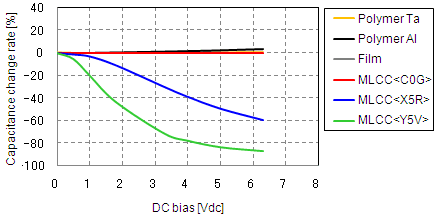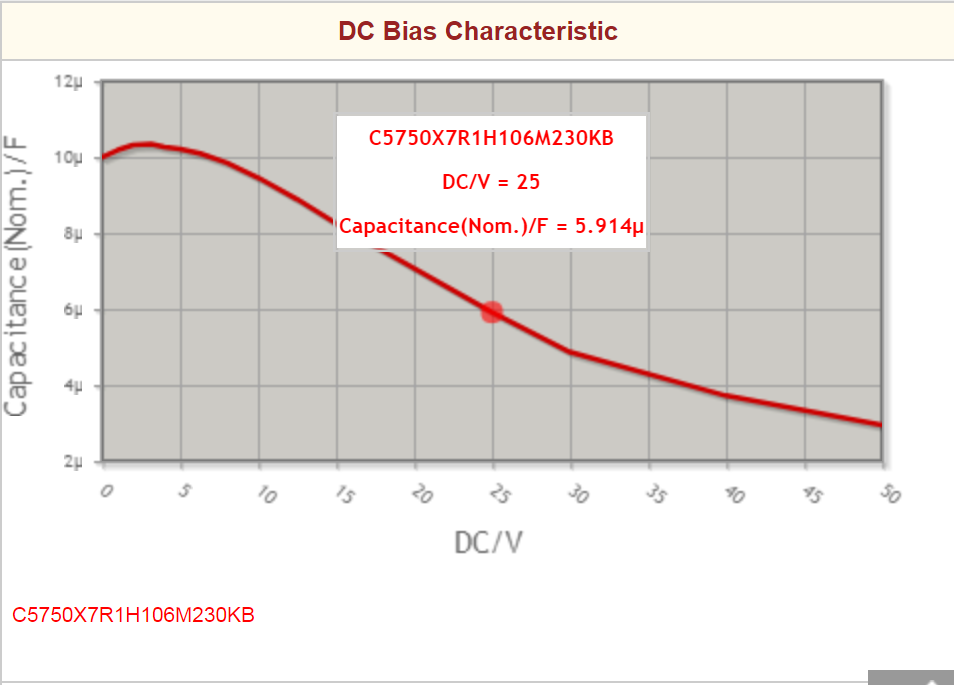A ceramic capacitor is a fixed value capacitor where the ceramic material acts as the dielectric it is constructed of two or more alternating layers of ceramic and a metal layer acting as the electrodes the composition of the ceramic material defines the electrical behavior and therefore applications.
Ceramic capacitor voltage bias.
This will only be linear when using a capacitor with constant capacitance up to 5v bias voltage mks mkt etc.
Figure 14 shows the dc bias dependence of capacitance for these three parts predicted by the vendor s data base.
I would have expected that using a 25v rated capacitor at 12v would have less variation than a 16v rated capacitor under the same bias.
Also found as maxim integrated application note 5527 temperature and voltage variation of ceramic capacitors or why your 4 7µf capacitor becomes a 0 33µf capacitor by mark fortunato.
Figure 1 shows an example of dc bias on capacitance for a 22 uf 35 v 1210 capacitor 35 v is the highest voltage 22 uf capacitor available in the 1210 case size.
At 25 v it has lost about 80 percent of its rated capacitance so the actual capacitance is about 4 4 uf.
Figure 2 shows performance for a 10 uf 50 v 1210 capacitor.
This application note covers the relationship between higher k dielectric types and voltage bias and is intended to help the engineer in making a more informed decision when engaging in the ceramic capacitor selection process.
However they still suffer from from some drawbacks including a loss of capacitance with increased bias voltage.
Ceramic capacitors characteristics faq no 0005.
As the applied dc voltage increases the ceramic capacitor s effective capacitance decreases.
Advances in mlccs multilayer ceramic chip capacitors have allowed manufacturers to achieve very high nominal capacitances.
The mechanism of dc bias characteristic in the high dielectric constant capacitor type of ceramic capacitors at present mainly batio3 barium titanate is used as a principal component of high dielectric.
The capacitance is also dependent on the ac bias level.
Figure 1 shows the relationship between the rate of change in capacitance and a range of dc bias voltages for 22 µf ceramic capacitors of different sizes with voltage rating of 6 3 v.
Significant impact on how that capacitor might behave when exposed to either dc or ac bias conditions.









